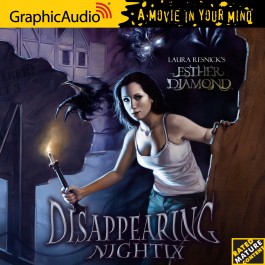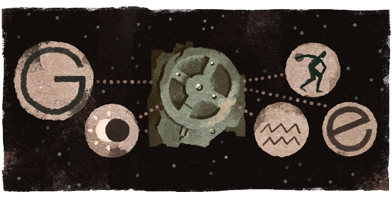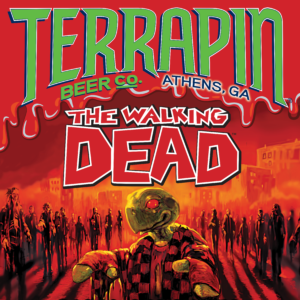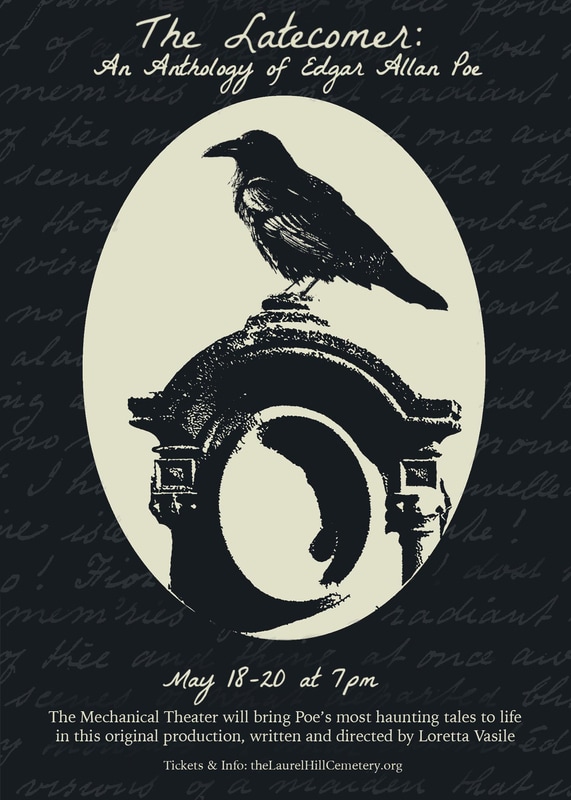(1) CATREON. Cat Rambo has updated her Patreon appeal video.
(2) WHERE’S WEIMER? DUFF traveler Paul Weimer has reached Hobbiton in New Zealand.
Hobbiton pic.twitter.com/2AViH4Kexo
— Paul "Princejvstin" Weimer (@PrinceJvstin) May 30, 2017
And especially for beer experts @RobHBedford @mikemartinez72 @redhead5318 pic.twitter.com/k9NZEjSw5M
— Paul "Princejvstin" Weimer (@PrinceJvstin) May 30, 2017
(3) OPTION. Steve Davidson announced that the Experimenter Publishing Company has formed Experimenter Media LLC to develop the Amazing Stories name.
Amazing Stories, the iconic title of the world’s first science fiction magazine and the title of a well-known Steven Spielberg helmed 1980s anthology show, has been optioned for a multi-year deal with Experimenter Media LLC, a newly minted development studio.
The title was previously optioned by NBC/Universal Television in 2015.
Experimenter Media intends to develop the show as an anthology series that will showcase top quality writing by some of the greatest Science Fiction authors in the field.
(4) SAUR PRAISE. “Several-day trips provide a good way to (try) catch(ing) up on my sf (deadtree) magazine reading,” says Daniel Dern. “The highlight for this past weekend was Richard Chedwyk’s latest ‘saur’ story, ‘The Man Who Put the Bomp,’ in F&SF, March/April 2017.
“If you’re a long(-enough) regular reader of F&SF (since 2000, based on info I’m about to cite), you’ve been enjoying these charmingly delightful ‘Saur Stories’ (including the 2004 Nebula short story “Bronte’s Egg”).
“I wouldn’t dream of spoiling your reading enjoyment with any actual details. I will say that this story answers or at least addresses some of the questions about the saurs. Although not all.”
Here’s F&SF’s “Gallery of Covers for Richard Chwedyk’s Saur Stories”
(5) GIVE ME THAT OLD TIME RELIGION. Can this job be automated? “Robot priest delivers blessings in five different languages”:
The video shows a man selecting one of five languages from a screen on BlessU-2’s chest which prompts the robot to begin reciting Bible verses while raising its arms in the air as its hands began to glow.
“We wanted people to consider if it is possible to be blessed by a machine, or if a human being is needed,” Stephan Krebs of the church responsible for the robot told The Guardian.
Krebs added the robot was not designed to “robotize our church work,” but create a new discussion around religion 500 years after Martin Luther sparked a cultural upheaval by posting his 95 theses to a church in the 16th century.
(6) CLASS M PLANET. It may be Earth-sized but, baby! It’s cold outside — “New potentially habitable ‘super-Earth’ orbiting star 21 light years away has just been spotted”.
Astronomers have found a new “super-Earth” circling an M-dwarf star, and it could be habitable. The dwarf star, designated as GJ 625, is around 21 light years away from our solar system and is around 1/3rd the size and mass of the Sun.
Super-Earths are a kind of exoplanet with a greater mass than the Earth, but not exceeding the mass of ice giants such as Neptune or Uranus. Although the term “super-Earth” is generally used to refer to the mass of the planetary body, scientists also use the term to describe planets that are visually larger than Earth.
(7) WHO DAT? While viewing the Paddington 2 trailer, Peter Capaldi’s face popped out at me. Whoever “Mr. Curry” is, the soon-to-be-former Doctor Who is playing him in this movie. Paddington 2 hits UK cinemas on November 10.
Featuring an all-star returning cast of Hugh Bonneville, Sally Hawkins, Julie Walters, Jim Broadbent, Peter Capaldi, Madeleine Harris and Samuel Joslin with Ben Whishaw as the voice of Paddington and Imelda Staunton as Aunt Lucy and joined by new cast members Hugh Grant and Brendan Gleeson.
(8) IMPERIAL MIDLIFE CRISIS. They say clothes make the man — but what do they make him? “I’ll take the sandtrooper in white: Meet the rebel scum making Star Wars armour sets for a living”.
“I think a lot of the older men are buying it because they’ve always wanted to look like a character from Star Wars but have never been able to afford the originals,” says Edwards. “There is that thinking if you dress up as a stormtrooper and look at yourself in the mirror, then you are transported into the world of Star Wars.”
So, where does a 30-something who wants a piece of the legend go? Not the mass market of sub-£1,000 suits that targets the fancy dresser.
No, they tap a cottage industry of British specialists — Ainsworth’s Shepperton Design Studios, Edwards’ CfO, and RS Prop Masters in the UK.
This trio is busy vacuum forming sheets of white ABS plastic using curved moulds to a 1.5mm thickness, cutting out and assembling around 30 pieces per suit, making straps, body suits, eyepieces, mics, boots and blasters. Prices run from £1,200 — around $1,550.
And in case you were wondering, there are few concessions on size or girth. The original stormtrooper was 5ft 10in and 110lbs. He remains so. The most you can expect is a little extra plastic around the overlapping at the edges if you’re a little large for a stormtrooper.
(9) TODAY’S DAY
Loomis Day
The History of Loomis Day. As with many things, the history of Loomis Day is actually the history of a man, and an event, and how they changed the world to come. Mahlon Loomis was a dentist in the 1800’s who had an idea that had nothing to do with teeth. He knew about the electrical properties of the atmosphere, and like Tesla had conceived of an idea to transmit electricity through the air to a distant location. His idea was, perhaps, off a bit. He thought to ‘charge’ a layer of the atmosphere to create an electrical conduit between two metal towers set high on mountaintops (Sound familiar?). What we find interesting about this entire process is that in the end, most if not all of Loomis’s theories on how the atmosphere worked and, indeed, how his own apparatus worked were completely wrong.
Click here for the rest of the story.
(10) TODAY’S BIRTHDAYS
- Born May 30, 1908 — Mel Blanc, voice of Bugs Bunny and many, many others cartoon characters.
- Born May 30 — Anna Feruglio Dal Dan
- Born May 30 — Ross Chamberlain
- Born May 30 — Paul Oldroyd
- Born May 30 — Nancy Lebovitz
(11) LISTEN UP. Seven of Laura Resnick’s “Esther Diamond” stories are available from Graphic Audio.
(12) CLOSE BUT NO CIGAR. Dave Farland tells Writers of the Future entrants who didn’t reach the highest rungs “Why You Only Got an Honorable Mention”.
Right now on my computer, I have a story up. I’ve read the first two pages, and although I’m a little soft on the opening paragraph, the rest of the first page is quite intriguing. My reaction is, “Looks like I’ll have to read this one.” In other words, I’m looking forward to reading it. I’m hoping that it can be a grand prize winner. I’m hoping that someday I’ll be able to say, “I was the one who discovered this author.”
Why do I feel that I have to read this particular story? First off, it has an engaging idea at its core. I know that from the first page. Second, the author is writing with clarity and grace. Third, the pacing is just right. In short, there are a lot of good things happening here for a first page.
Stories that keep me reading all the way through will almost always get an Honorable Mention. That’s my way of saying, “You’re writing almost at a professional level, but this one didn’t quite do it for me.” Or better yet, “I’d really like to see more from you. Keep trying!”
There are four simple reasons why a story may not rise above Honorable Mention.
* The idea for the story isn’t particularly fresh or interesting. You may not realize it, but the basic concept of your story has probably been done before. For example, let’s say that you decide to write a story about “Zombie Sharecroppers.” Great. You might write it beautifully, and I might get through the entire tale and enjoy it. But ultimately I have to look at it and ask, “Is the basic tenet of the story fresh and original? Did the author give it a surprise twist that lifted it above similar stories?” If the answer to both of those questions is no, then it will probably not get higher than an Honorable Mention. You’ll need to come at me next time with a fresh idea….
(13) SURROUNDED BY ALIENS. In the Washington Post, Ben Guarino uses the release of Alien: Covenant to discuss what we know about parasites, concluding that the notion in the Alien franchise that “a parasite could become a hybrid of human and host organism…has some scientific merit.”– “Disgusting ‘Alien’ movie monster not as horrible as real things in nature”.
The new film, according to Washington Post critic Ann Hornaday, is “a largely turgid, often thoroughly unpleasant affair.” Savvy moviegoers certainly expect some amount of unpleasantness — that sensation being par for the course whenever egg-laying parasites are involved.
But for all the cinematic aliens’ gravid grotesquerie, there exists a world where they would simply be chumps. It is a place crawling with more deceptive, more horrible things. Welcome to Earth.
The inhabitants of our planet directly inspired “Alien” screenwriter Dan O’Bannon and director Ridley Scott. O’Bannon in part looked to horror writer H.P. Lovecraft and previous works of science fiction. But he also plumbed the depths of nature, patterning “the Alien’s life cycle on real-life parasites,” as he said in his 2003 essay “Something Perfectly Disgusting.”
(14) FINELY TUNED EAR. Can you tell which track was written by computer? “For Video Soundtracks, Computers Are The New Composers”.
Four years later, Villegas, who works at a technical college, has a side business doing product reviews on his YouTube channel. He found that adding a little music really improved his videos.
“It just adds that third dimension that is missing sometimes,” he says.
But he hit a snag. Music is expensive. Villegas would either have to pay for rights or pay a composer.
“I upload weekly,” Villegas says. “So for me to pay a composer for 52 separate custom songs … wouldn’t make sense in the return on investment for me.”
Then Villegas discovered Jukedeck, a company that creates and sells computer-generated music. Jukedeck charges as little as 99 cents a track for a small business and $21.99 for a large business.
Chip Hitchcock comments, “The human track is by Vivaldi; IMO this means the program might be able to play checkers, but it’s a long way from winning at go.”
(15) BUBBLE AND SQUEAK. Preserving the sounds of old computers: “Fossils Of Technology: ‘The Imitation Archive’ Turns Near-Extinct Machines Into Music”.
Computers are part of the everyday sounds of our times — for a while. But as each new digital device slips into inevitable obsolescence, so do their signature sounds. Composer Matt Parker thought that meant losing touch with some of our history — so, he’s has created an archive of 126 sound recordings from the historic computers of Bletchley Park, the site where British mathematicians, scientists and spies broke German’s military codes during World War II. And he’s worked those sounds into a new series of musical compositions on an album called The Imitation Archive.
(16) THE GLASS HARMONICA CEILING. “The woman who could ‘draw’ music” (but was ignored because sound engineering was man’s work).
Few people know Daphne Oram, but she helped shape the sounds, and songs, we listen to today. A pioneer of electronic music, she wrote Still Point — thought to be the world’s first composition which manipulates electronic sounds in real time — in 1949. In 1957, she set up the famous BBC Radiophonic Workshop. The same year, she began working on her Oramics machine, which turned graphical gestures into music: the user could ‘draw’ the sounds they wished to hear.
(17) RUN SILENT, RUN DEEP. Wouldn’t you know it belongs to Microsoft? “Inside the quietest place on Earth”.
If LeSalle Munroe stands still for a few moments in his “office”, something unsettling can happen — he can hear the blood rushing around his body and his eyes squelch as they move in his skull.
While many people work in places filled with the tip-tap of keyboards, the hubbub of chatter from colleagues and a constant hum of computers, Munroe is surrounded by almost total silence. His office is the quietest place on the planet.
The specially constructed chamber is hidden in the depths of Building 87 at Microsoft’s headquarters in Redmond, Washington, where the firm’s hardware laboratories are based. Products like the Surface computers, Xbox and Hololens have all been developed here. Microsoft’s engineers built the room — known as an anechoic chamber — to help them test new equipment they were developing and in 2015 it set the official world record for silence when the background noise level inside was measured at an ear-straining -20.6 decibels.
(18) HE’S MAD, YOU KNOW. Wikipedia’s Featured Article for May 30 — “Harvey Kurtzman’s Jungle Book”:
Harvey Kurtzman’s Jungle Book is a graphic novel by American cartoonist Harvey Kurtzman, published in 1959. Kurtzman aimed it at an adult audience, in contrast to his earlier work for adolescents in periodicals such as Mad. The social satire in the book’s four stories targets Peter Gunn-style private-detective shows, Westerns such as Gunsmoke, capitalist avarice in the publishing industry, Freudian pop psychology, and lynch-hungry yokels in the South. Kurtzman’s character Goodman Beaver makes his first appearance in one of the stories.
Kurtzman created the satirical Mad in 1952, but left its publisher EC Comics in 1956 after a dispute over financial control. After two failed attempts with similar publications, Kurtzman proposed Jungle Book as an all-original cartoon book to Ballantine Books to replace its successful series of Mad collections, which had moved to another publisher….
(19) LONDON TOWN. If you want to hear more about London Comic Con than just Flash Gordon and The Hulk throwing tantrums, read the BBC’s mini-interviews with cosplayers and creators who were there.
Comic book illustrator Karen Rubins
“I’m here to sell my comics and prints and meet people who like my work.
“I work for a comic called The Phoenix with a strip called The Shivers by Dan Hartwell, and our characters include girl heroes solving mysteries and standing up to supernatural threats.
“In the comic village here at Comic Con there’s at least 50% female artists and it’s a great space to work, it’s really inclusive and there’s loads of different comics you can discover.”
[Thanks to Chip Hitchcock, Martin Morse Wooster, Cat Eldridge, Cat Rambo, Carl Slaughter, John King Tarpinian, and Steve Davidson for some of these stories. Title credit goes to File 770 contributing editor of the day Andrew.]










